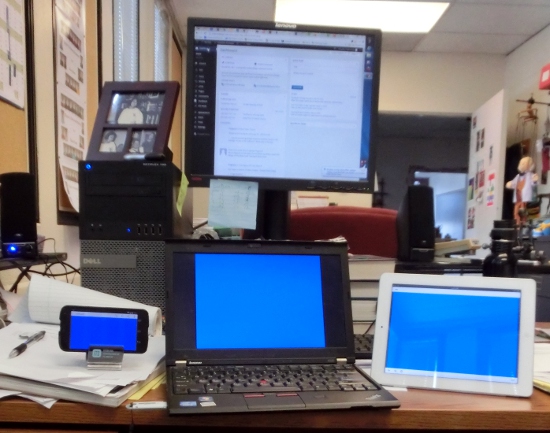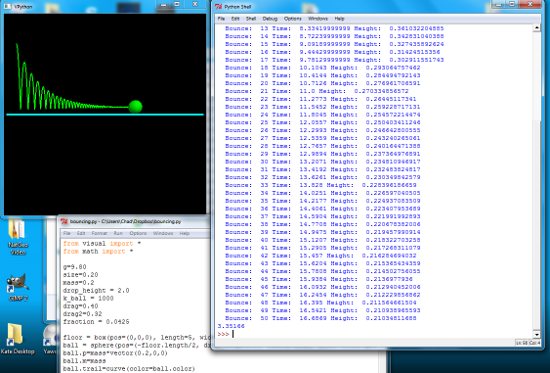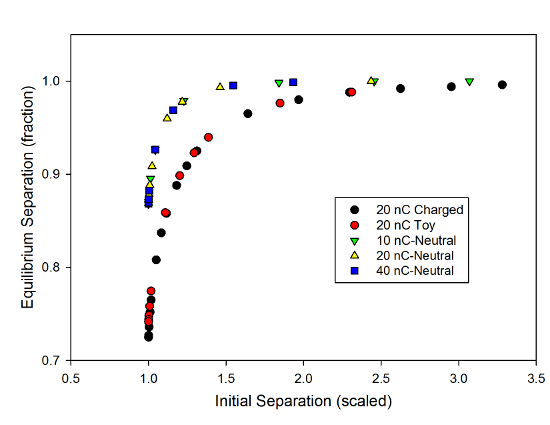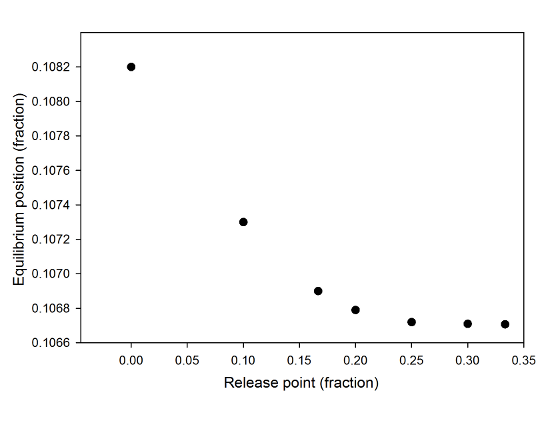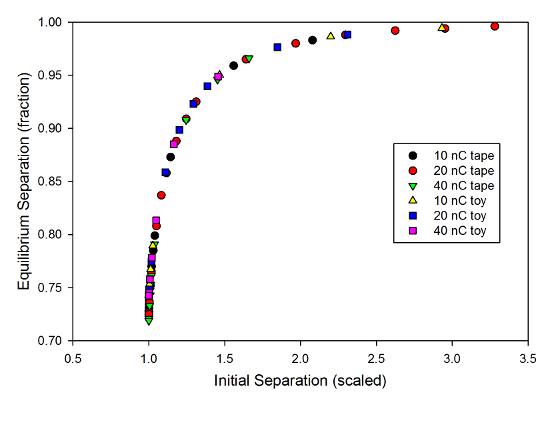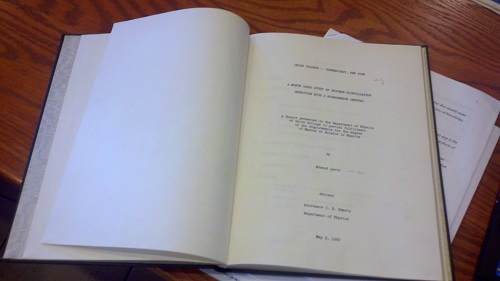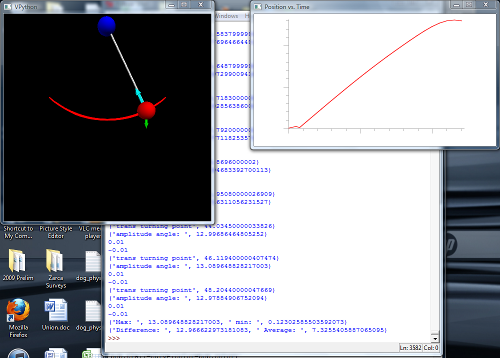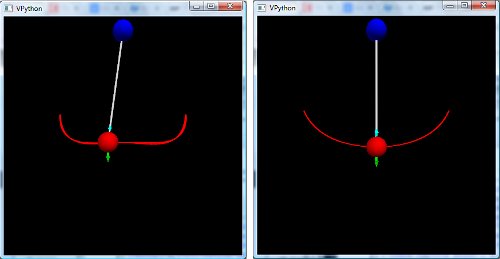This year’s “Flame Challenge” is to explain color in terms an 11-year-old can follow. I have opinions on this subject, a background in AMO physics, and access to scientific equipment, so I’m putting something together. In the course of this, though, it occurred to me to wonder how my different portable computing devices process color.… Continue reading On Computer Color
Category: Computing
Follow the Bouncing Ball
Last week, Rhett did a post on animating a bouncing ball in VPython. This was mostly making a point about the distinction between real simulation and animation, along the lines of yesterday’s post on social construction of videogame reality. But, of course, my immediate reaction was, “That’s not how a bouncing ball looks…” This is… Continue reading Follow the Bouncing Ball
Video Editing Software?
Both SteelyKid’s kindergarten and the snow-day day-care program that the kids go to were closed today, which kind of threw a wrench in things. But it’s also kind of fun, as I got to spend some time playing outside with SteelyKid on her play set in the snow. The “featured image” above is a cell-phone… Continue reading Video Editing Software?
Sticky Tape: The Final Chapter
I realize people are getting sick of reading me talk about this charged-tape business, which has run to one, two, three, four posts at this point. Truth be told, I’m losing enthusiasm for it myself. So this will be the final post, at least for now… As I mentioned on Twitter, as I type this… Continue reading Sticky Tape: The Final Chapter
The Tricky Thing About Simulated Dynamics
In the previous post about simulating the attraction between sticky tapes using VPython, I ended with a teaser mentioning that there was a discrepancy between the simulation and the theoretical solution from directly solving the equations. The problem is kind of subtle, but clearly visible in this graph from that post: In this, we see… Continue reading The Tricky Thing About Simulated Dynamics
Simulated Tape and Universal Behavior
Having spent a lot of time solving equations related to sticky tape models, including trying to work solutions in my head while driving to Grandma and Grandpa’s with the kids, and making some measurements of real tapes, there was only one thing left to do: try simulating this problem in VPython. Because I’m a physics… Continue reading Simulated Tape and Universal Behavior
(Not-so-)Ancient History of Physics: Monte Carlo Simulation in 1960
We cleared a bunch of space in our deep storage area over the summer, and one of the things we found was a box full of old student theses from the 1950’s and 1960’s. The library already had copies of them, but I thought it was sort of cool to have a look into the… Continue reading (Not-so-)Ancient History of Physics: Monte Carlo Simulation in 1960
Fun With Simulated Scattering
Two chapters of the book-in-progress will be devoted to the development of the modern understanding of the atom. One of these is about the Bohr model, which turned 100 this year, but Bohr’s model would not have been possible without an earlier experiment. The actual experiment was done by Ernest Marsden and Hans Geiger, but… Continue reading Fun With Simulated Scattering
Driving a Simulated Pendulum
Some time back, I spent a bunch of time writing a VPython program that simulated the motion of a pendulum, which turned out to do some strange things. In the comments to that, there were two things worth mentioning: first and foremost, Arnoques at #5 spotted a small error in the code that fixes the… Continue reading Driving a Simulated Pendulum
Mysteries of the Simulated Pendulum
Last week, I spent a bunch of time using VPython to simulate a simple pendulum, which was a fun way to fritter away several hours (yes, I’m a great big nerd), and led to some fun physics. I had a little more time to kill, so I did one of the things I mentioned as… Continue reading Mysteries of the Simulated Pendulum
